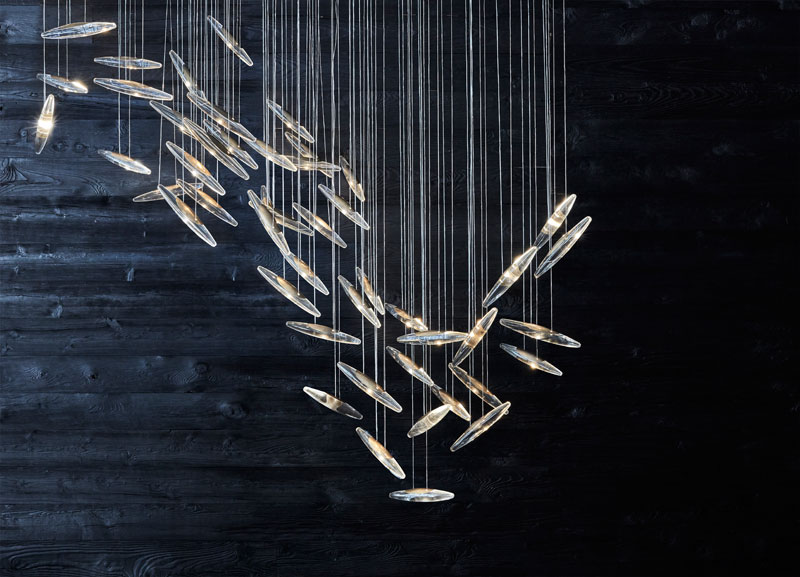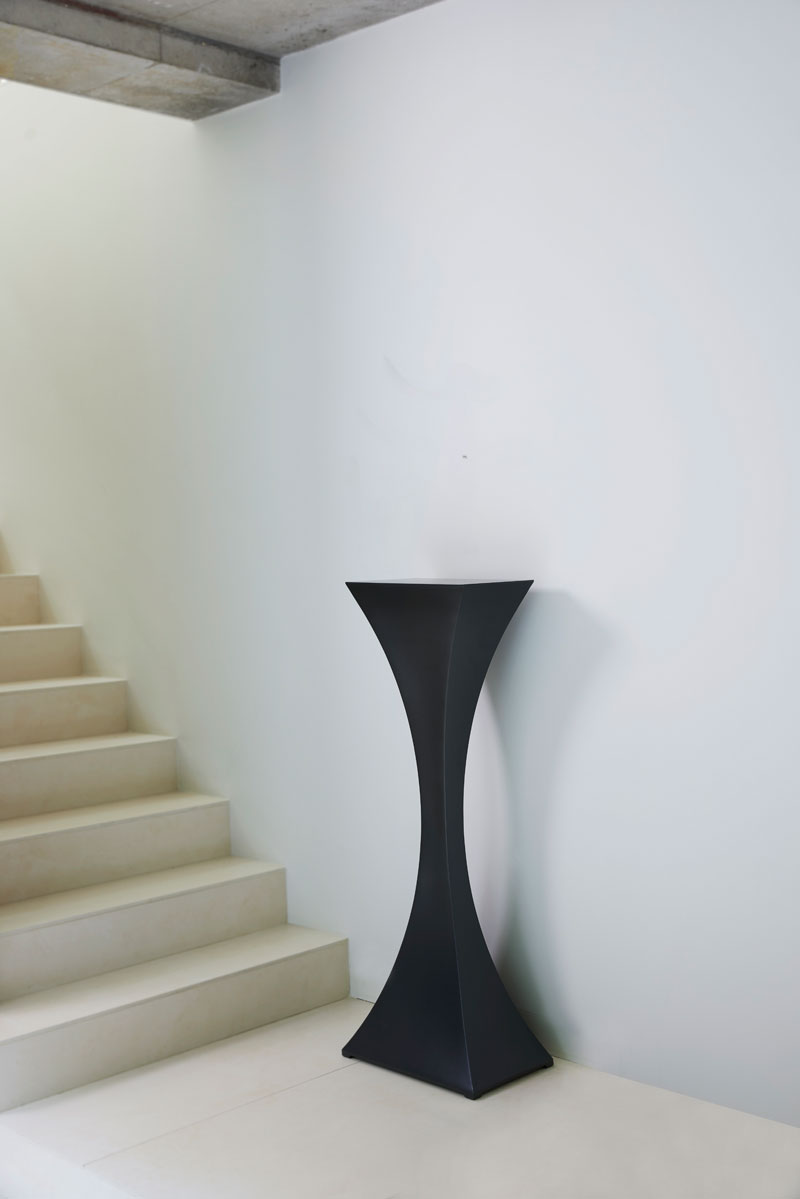What’s the largest art statement in your home? John Law, creative director of Woodhouse & Law gives his expert advice on featuring art in the interior that has a sizeable impact
Art and sculpture are both such important elements of interior design schemes, yet can so often get overlooked in those key early stages when pulling a room together. And more’s the pity; these are often the very pieces that can really help personalise a space, giving it not only depth but also a sense of individuality.

Sometimes however, and excuse the pun, it’s easy to get hung up on how and where to introduce these elements to a scheme. Particularly with larger pieces, and in smaller homes. At times, though, a larger piece can really give that much-needed scale to a room, while ensuring the space stays restful. For example, a large-scale landscape in a relatively muted palate can add depth and texture to a room without feeling overbearing.
Often the key to ensuring a space can pull this off is to dodge convention. Try to avoid viewing each elevation of a room in isolation and defaulting to the placement of a painting centrally on a wall. Think instead about the room as a canvas overall, of how one wall interacts with another. For example, look at placing artwork over doorways, above larger pieces of furniture or by a fireplace. Consideration should be given to what lies beyond those four walls; of how the views beyond, to the garden or to the next room, might best be complemented.

Attracted to the stillness and quiet presence of stone laid down hundreds of millions of years ago, Rosie skilfully and subtly carves to reveal the intimate beauty of her chosen material
Clifton Contemporary Art
Large scale art needn’t be exclusively in the form of large canvas; it can be equally impressive to group together smaller pieces of art. In a recent project, we displayed ornamental objects alongside piece of art within a glass-fronted armoire to create a larger installation. This playful way of adding interest and depth to the dining room scheme allowed for these pieces to be changed over time, as and when new pieces are collected and new tablescapes created.
A collection of maps, smaller paintings, or photographs, or indeed a combination of each of these can be equally impactful. What’s important however is that visually they sit well together. This might be through cohesive, complementary framing, or how they are displayed relative to the context of the room. The collection might subtly relate for example to the colour, form and texture of items on, say, a console table below.

I was missing the lush vegetation and colours of my old home in Tobago so I invited a couple of artists from my gallery, Room 212, to recreate it in large scale on my garden wall. Its amazing how this colourful mural appears to increase the size of the garden and enlivens my whole living area
Sarah Thorp at Room 212
Many large-scale wallpaper designs can also create the same impact and drama as a large piece of original art. When arranging art on bold patterns, take care to avoid accidental clashes; this can be done through introducing wider mounts and clever framing to give each piece space. Equally, if a painting or print references a colour or pattern in the wallpaper behind, it can sit more comfortably.
Sculpture can also be equally daunting. The first obstacle to overcome is the assumption that that sculpture must take the form of a dedicated piece. Many pieces of furniture and lighting have sculptural elements in their own right. For example, Tom Faulkner’s Ava dining table, or Porta Romana’s Rhomboid console table.
Lighting can also be a great way to add a sculptural element to your scheme. Take the Gaia pendant and Murmuration installation, both by Ochre Lighting; these pieces are not only organic by nature but also introduce a powerful, moving design element to any scheme. We’ve found such organic pieces to work particularly well within Georgian homes. They offer a contrast to the strong, clean lines often found in the architectural detailing of these properties; in panelling, architraves, and shutters, for example.

Large artworks command attention, aesthetically and atmospherically. They are visually show-stopping and offer an impressive talking point
Hidden Gallery
For those stand-alone pieces of sculpture, however, plinths are a great way to ensure they are displayed to their best. Our go-to is Tom Faulkner’s Capricorn Plinth; a piece of sculpture in its own right, its curved lines helping to draw the eye to the item on display without competing with it. Its concave form also helps introduce pieces to the corners of rooms and help to add interest to those with high ceilings.
Whether a piece of art or sculpture, always take time to consider the subject of the piece. For example, in a recent scheme, we incorporated a portrait by emerging artist Hatty Butler, where the subject is looking up and out of the painting. We deliberately placed this piece on a double-height landing with a high window. Each day the portrait is bathed in sunlight, just as if the subject is seeking it out.
We each have an innate, emotional connection with the pieces of art that are dear to us; they tell a story, our story, and without words, give a narrative to space in which they sit. And sometimes rules need to be broken to ensure that narrative is truly seen and heard.
Woodhouse & Law: woodhouseandlaw.co.uk; Clifton Contemporary Art: cliftoncontemporaryart.co.uk; Room 212: room212.co.uk; Hidden Gallery: hiddengallery.co.uk
Main image: Tom Faulkner’s Capricorn Plinth is a piece of sculpture in its own right, as well as offering an elegant plinth for sculptural pieces



